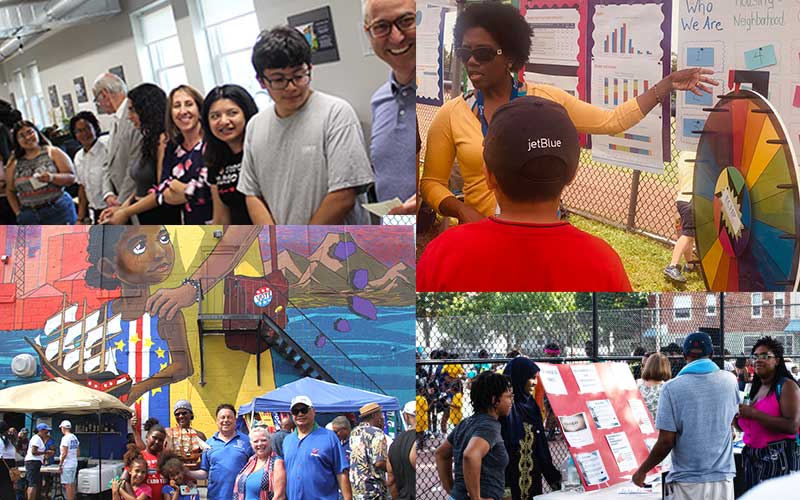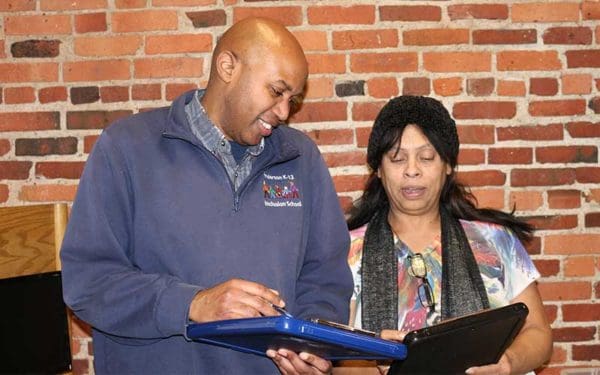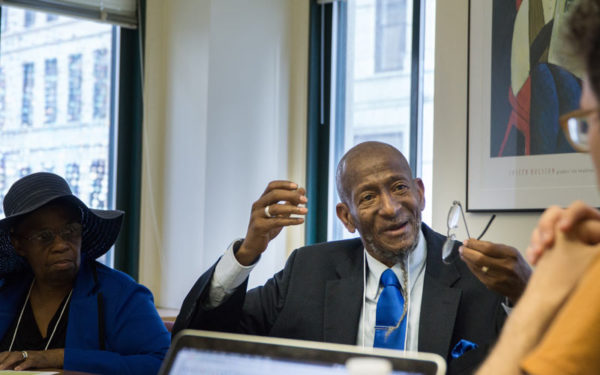
From Chelsea to New Bedford, resident researchers developed creative ways to share the Healthy Neighborhood Study findings that were most relevant to their community.
Too often, research studies sit on shelves in the offices of the academics who created them, never to be applied in the field. When CLF and our partners designed the Healthy Neighborhoods Study, we set out to do just the opposite. We didn’t just want to ask community members what matters most to their health and well-being; we also wanted to invest in on-the-ground results. That meant taking the lead from resident researchers who are already creating positive change in their neighborhoods.
For four years, CLF, our team of nine community partners, and over 40 resident researchers in metro-Boston have crunched numbers, surveyed neighbors, and developed and tested hypotheses. This past summer, the communities that participated in the study – Chelsea, Everett, Lynn, New Bedford, Fall River, Brockton, Roxbury, Dorchester, and Mattapan – turned that research data into action by sharing the results to make a difference where they live.
Putting Communities at the Heart
Communities across metro-Boston are experiencing development pressures, and it’s no secret that we are in a housing crisis. No one knows the impacts that development and displacement can have on a person’s physical and mental well-being better than residents and local community groups, especially those who live in a place as it changes. Many residents who have experienced these challenges are working to address them, but they recognize that they need data to make the case when speaking to community leaders.
Launched in 2015, the multi-year Healthy Neighborhoods Study is helping to fill this data gap. Our research focuses on building knowledge with community members directly impacted by the development happening in their neighborhoods. A primary goal is for the research to result in community-led changes. Achieving this goal has meant centering the experiences, thoughts, and needs of community members from the outset.
We have done this by working with community partners who are skilled organizers focused on community health, the environment, and/or anti-displacement. Together with CLF, MIT Department of Urban Studies and Planning, and other members of our research consortium, our partners designed the study, including its methods and the on-the-ground research itself, to would yield data they can use to drive meaningful action in their communities.
This type of research is commonly referred to as participatory action research or PAR.
Data about Everyone, for Everyone
Over the past four years, resident researchers have collected (and will continue to collect) survey data from people in their own neighborhoods. To date, over 2,500 residents across the nine communities have responded to nearly 150 survey questions about basic demographics, mobility, neighborhood characteristics, priorities, health, discrimination, and changes where they live.
We’ve gained powerful insights through this process. For example, community engagement isn’t just the right thing to do. Our data shows that people who feel more connected to the changes happening in their neighborhoods have better health. Our research has also confirmed how strongly health is affected by housing stability and social support.
Each group of resident researchers has developed a community-specific plan to make sure the data collected represent all voices. They especially wanted to include those they believe to be most impacted, such as people who speak multiple languages, those experiencing homelessness, and families with low incomes.
As a result, the data include perspectives often excluded from traditional research studies. For example, in Chelsea, our partners at GreenRoots know that the Spanish-speaking community often gets left out of decision-making processes, and they wanted data to show how gentrification impacts them. To ensure that these voices are heard, more than half of the resident researchers in Chelsea speak Spanish. This tactic led to 75% of Chelsea survey participants reporting that they speak a language other than English at home.
The data we have collected serve three purposes. First, the local findings are being used by grassroots groups to tackle community-level issues. And second, the data aggregated across multiple communities are being shared by our community partners in their own work to ensure that policymakers have a full picture of the impacts of development-related policies. Finally, the academic community uses our research publications to learn about the relationship between neighborhoods and health and to advance the use of participatory action research.
The Power of Data in Community Hands
In a more typical research study, we might share our key findings by holding a community forum, inviting stakeholders to review a report and hear a presentation. However, our participatory action research model puts this task in the hands of the community partners themselves.
Earlier this year, resident researchers and community partners designed strategies to use the Healthy Neighborhoods Study data locally. Each team received $1,000 and 80 combined team hours to develop and launch their project. Their action projects were broad in scope, focusing on issues such as displacement, strengthening communities, and food access.
Research into Action
We know that where you live matters for your health. Our community partners understand this firsthand because they live it every day.
We also recognize that those closest to a problem grasp both its implications and potential solutions better than we can at CLF or MIT. The on-the-ground action projects provide resources and support for our partners to share their research and data with neighbors and decision-makers in a meaningful way. Whether it’s fighting displacement caused by gentrification; improving access to fresh, healthy food; or connecting neighbors to vital resources, our community partners are using data to shape conversations and drive positive change.
Stay tuned over the coming weeks as we share stories from each community and the work they are doing to turn research into action.
This blog is one in a series about how our resident researchers are turning research into action. Read the entire series here.



